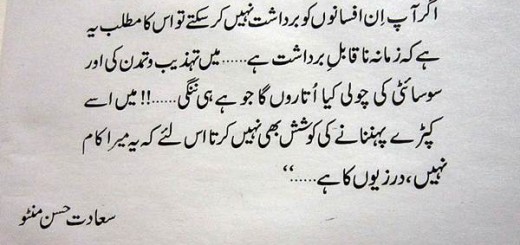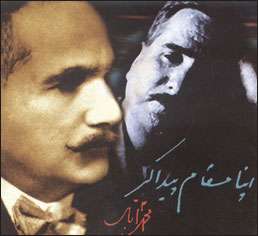On Cyberspace and Human Communication – By F. Hoodbhoy
The theme addressed here is how Virtual Reality and Cyberspace have and will effect how people communicate with each other.
Allucquere Rosanne Stone’s paper, “Will the Real Body Please Stand Up?” presents an interesting perspective on her “four epochs” of communication systems. In her paper, she cites many examples how virtual communication enables people to communicate with one another with total disregard to physical attributes. Prejudices and discriminations that we humans hold so dear in “real” communication are effortlessly shed in the virtual world. Differences of sex, age, nationality, educational background, skin color, religion etc., attributes that have been the basis of history itself, suddenly, cease to be so important.
How and why is this? Is it possible that this is yet another fad in human history that has a unifying appeal? Just as the prophets spread their messages of religion to warring factions, binding them together with love for God and peace with each other, is Cyberspace spreading a similar message of unity for humanity?
A few months ago, I heard some of Pakistan’s most outstanding expatriate literati at an economic and social development conference on “Integrating Pakistan into the Global Economy” at the Sloan School of Management at MIT. This conference has already been covered in Chowk. For me, it was an inspiring conference; one that was decidedly less inclined to hoopla.
At the conference, Dr. Tahir Andrabi, a professor at Pomona College said, “It doesn’t matter what the question is- Supply and Demand is the answer.” The supply and demand of communication is what we need to start analyzing. When we talk of information technology (IT), we forget that, as far reaching as it’s potential is, interactive IT is directly accessible by only a fraction of humanity. Unidirectional information technology in the form of TV, radio etc., can be said to be accessible to nearly 80% of humanity.
Dr. Andrabi argues that in societies such as Pakistan where literacy rates are abysmally low, the dependence on oral and visual communication is incredibly high; stories are passed on generation to generation by word of mouth by avid storytellers whose theatrical presentations are never rehearsed from scripts. The exponentially increasing presence of Satellite receivers in even the remotest villages of Pakistan are an indicator of how well this theory holds true; today, one out of every three homes in Pakistan has access to satellite television programming. One out of every 9 homes has access to a television. Technologically speaking however, it is not difficult to predict that bi-directional, interactive IT will be available to the “masses” within 15 years. With projects such as Teledesic and Motorola’s low-orbital-satellite network, the infrastructure costs of laying cables and creating information pathways, the major hurdle for budget-constrained countries like Pakistan, will be bypassed entirely. What this means is that everyone in these countries will then have access to the Internet (or whatever name it takes on then.)
What are the repercussions of this? Information is power and when information is available to everyone, everyone is empowered. George Orwell’s satirical character Napoleon’s statement, “All people are equal but some are more equal than others” (Animal Farm) will be challenged. Economic well being is largely a function of the information available to an individual and when information becomes easily available to everyone, it is a safe assumption that the gross discrepancies in economic standards that prevail today will be reduced.
An interesting meld of human communication patterns will ensue, just as they are now. There was a time when an answering machine was considered a status symbol; today it is a staple item of every household. In “conservative” societies such as Pakistan where society frowns upon young men and women meeting socially, the telephone has proven the catalyst to hundreds of thousands of relationships. In the office where I worked, one of my colleagues even proposed (and was accepted) over the phone!
While it is true that many prejudices are in danger of being rendered obscure by new mediums of communication technology, there is the risk that these prejudices can in fact be exacerbated by the same technologies. The earliest users of the Internet in Pakistan were the “terrorist” factions of one of some political parties. They were able to maintain their strong communication channels virtually unchallenged by using the Internet, a technology that the government did not have the resources (or realization) to intercede and regulate. Many terrorist activities in Pakistan are attributed to have been coordinated via the Internet. The same is true of neo-Nazis in Germany and the Ku Klux Klan in the United States.
As we traverse the progressing time line of the present to the future, and as communication technology evolves and spreads simultaneously, I think we are in for massive breakdowns and challenges of our established beliefs and value systems. It used to be that “wise people” (and hence respected individuals) were people who were the oldest because they had experienced more of life than the young had. Today, age is not a guarantee to knowledge. The social ramifications are enormous. The once timeless impression of a grandfather telling his grandchildren “whoppers” about tales of his youth are likely to be rendered obsolete; today’s grandchild knows enough to question the veracity of a grandparent’s statement. The concept of challenging an elder’s knowledge is a major social change in many Asian and family-centered societies like Singapore, India, and Pakistan.
To me, it seems that one of the dangers of the “a-cultural ” development of information technology will result in the obsolescence of many cultures; the economics of the “Supply and Demand” of information technology is not high enough to engender the development of native language interfaces. For example, India, despite possessing indigenous advanced-technology centers, continues to develop software with interfaces in English. I see this as perhaps an unintentional, but nonetheless significant genocide on languages other than English and the cultures that those languages represent; the poetry, songs, literature, legends, all become extinct at rates far faster than they took to develop. I think that this unwitting adventure in technology will influence forming generations to consider their cultural heritage as “old fashioned” and discourage the exploration of their own historic roots. I think of that as “Wrong”, not for moral reasons, but for the reason that it makes the blanket assumption that everything of the west (as most material on the IT media is developed in or from a Western perspective) is good and that everything from the east is bad. That imbalance is a prejudice I would not like to encourage, but one that I think the prolific of content on information media engenders.
All said and done, we have a long way to go before we can understand the impact that new communication technologies will have on our collective human psyche. One thing that there is no getting around is that technology has rendered the word “evolution” obscure; every change in human behavior now will, of circumstances engendered by technology, occur in the time frame of revolutions. I won’t have to think in terms of “my children’s children” as commentators of the past did; these changes are, and will continue, to happen in my lifetime.













